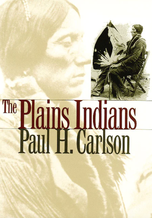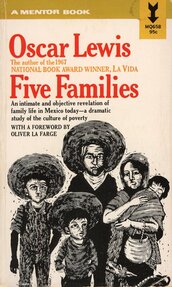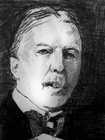|
Merry Christmas and a Happy 2021! Next post: January 5, 2021
0 Comments
My Book World Carlson, Paul. The Plains Indians. College Station: Texas A&M UP, 1998. I grew up in Kansas amid the Great Plains, and I have lived my adult life in what is locally called the South Plains of Texas. As a child, because of all the Indian street names (Seneca, Pawnee, Osage) in my Wichita neighborhood, and because of artifacts I found, I believed there was an invisible life beneath the “civilization” that had been superimposed over the top of the previous one. Well, Professor Carlson unveils that previous world so that it is no longer invisible. Through detailed treatment of Indian life—its beginning, how horses and bison effected change, economics, the various social structures (tribes differed), war with other tribes as well as whites, and reservation life—he portrays the truth about native plains cultures. Indian tribes were quite capable of assimilating change, sometimes to their detriment. Slowly, over a century and a half, European culture squelched or eviscerated Indian life, breaking treaties and reservation agreements when it suited the federal government to take land that it wanted. One can only imagine the sort of country the U.S. would be today if Europeans had treated the Indians (as many as five million coast to coast) fairly and with respect: perhaps there would have been no African slave trade, there would have existed cities of mixed heritage, Indian forms of governing that might been fairer than our amalgam of democracy and capitalism which seems to eat human flesh at an astounding rate: Perhaps less greed and more consideration for all human life. I could be wrong, but I encountered a couple of typos that a copyeditor at an academic press should not have missed: On page 49, the author uses “dominate,” a verb, for what should be “dominant,” an adjective: “Just over a century later, the Plains Indians were living on reservations, and many of their traditional ways changed again—or for a time endured—beneath dominant white culture before reemerging again in the twentieth century” (49). On page 174, the author misspells “possessed” by omitting the first “s”: “In 1890 fifty-nine agencies possessed an Indian law-enforcement squad” (174). These errors mar an otherwise scholarly and informative book. FRIDAY, January 8, 2021 | My Book World: Harold Brodkey's First Loves and Other Sorrows
TOMORROW: My Book World | Paul Carlson's The Plains Indians
FRIDAY: My Book World | Paul Carlson's The Plains Indians
FRIDAY: My Book World | Paul Carlson's The Plains Indians
My Book World Pascoe, Sara. Sex Power Money. London: Faber, 2019. I first saw Ms. Pascoe on BBC America’s Graham Norton Show and realized I must read this, her second book. In it she not only expresses her opinion on feminism but does so in a manner that is by turns hysterically funny, sobering concerning the reality for sex workers, and an honest reveal of her own life. She spends a great deal of time debating (with herself) the ins and outs and rights and wrongs of pornography. One keeps reading both because of her sharp humor and her incisive research. Some nuggets: “With our beloved prairie voles the female has her ovulation induced by the smell of male urine. It’s a sure sign there’s a male nearby and so her body gets ready for mating. The exact opposite of a human female getting a whiff of urinals in a nightclub and her vagina falling off in disgust” (47). Having heaped my praise upon Ms. Pascoe’s efforts, I wonder how combining humor with highly researched material concerning sex can work. Is the scientific a bit tainted by her insouciance, or is her humor, likewise, deadened a bit by the scientific? You read. You judge. I loved it!
NEXT FRIDAY: My Book World | Paul Carlson's The Plains Indians
TOMORROW: My Book World | Sara Pascoe's Sex Power Money
FRIDAY: My Book World | Sara Pascoe's Sex Power Money
FRIDAY: My Book World | Sara Pascoe's Sex Power Money
My Book World Lewis, Oscar. With a foreword by Oliver La Farge. Five Families: Mexican Case Studies in the Culture of Poverty. New York: Basic, 1959. Never has an “old” book seemed so relevant. Lewis’s tome, by now, is history, but he takes five Mexican families (some of whom he has known since the 1940s) in the 1950s and makes a study of them. According to his own account, his approach is multi-faceted: 1) a holistic approach with regard to a single family 2) through the lens of one family member 3) to study a problem area in the family, and 4) another holistic method by taking in a typical day of a family. Lewis’s process makes for a fascinating read. You feel as if you are reading a novel, that you are in the midst of each one of these families: The Martínez family living in the highland village of Azteca, the Gómez family of the Casa Grande neighborhood in Mexico City, the Gutiérrez family living on MC’s “Street of the Bakers,” the Sánchez family, “on the edge of Mexico City,” and the Castro family in the wealthiest neighborhood studied, the Lomas de Chapultepec area of Mexico City. Lewis takes you into the various hovels that four of the families live in: earthen floors, primitive or substandard heating and cooking stoves, crowded conditions with multiple family members occupying beds or spaces on the floors. He lets us in on the daily grind of the working poor, always borrowing a few pesos from a friend, neighbor, or family member to make ends meet, and sometimes failing. The drudge of dead-end jobs or self-employment, i.e. selling off items in the street for yet a few more pesos. This all happens sixty years ago, and yet it would not be surprising to find out that many Mexicans still live the same way. No wonder they find conditions, as difficult as they are, in the United States “better” by comparison. The final family, The Castro family, is by contrast, a representative of what Lewis calls the nouveau riche. David Castro, has come from poverty but has worked hard and successfully to bring his family to the “fringe” of one of the wealthier neighborhoods of MC. They have enough bedrooms for each of their four children, three boys and one girl. They have plenty of money, apparently, but David is largely in control of it. He and his wife, Isabel, have a “free union” marriage which is recognized neither by the government nor the church, but it suits David Castro’s needs: to control his wife and his four spoiled children. They have three servants, but nothing is ever done to Isabel’s satisfaction. David never gives her enough money, she claims, and yet what she does have she spends quite freely on expensive items for herself and her children. The Castro family stands in stark contrast to the other four, and yet there seem to be some similarities. All five families with the exception of one are ruled by a macho man with an iron fist. All except one man (and Lewis suspects he may have “homosexual tendencies”) has affairs with multiple women. Children bicker and vie for their parents’ attention in various dysfunctional ways. Nutrition is poor (fried “meat” that is the dregs of what a shopper can buy). In all, however, the book still stands as an compelling study, one that should still interest Mexico’s neighbors who live along the border of the United States of America. NEXT FRIDAY: My Book World | Sara Pascoe's Sex Power Money
TOMORROW: My Book World | Oscar Lewis's Five Families
FRIDAY: My Book World | Oscar Lewis's Five Families
FRIDAY: My Book World | Oscar Lewis's Five Families
|
AUTHOR
Richard Jespers is a writer living in Lubbock, Texas, USA. See my profile at Author Central:
http://amazon.com/author/rjespers Archives
June 2024
Categories
All
Blogroll
Websites
|

















 RSS Feed
RSS Feed